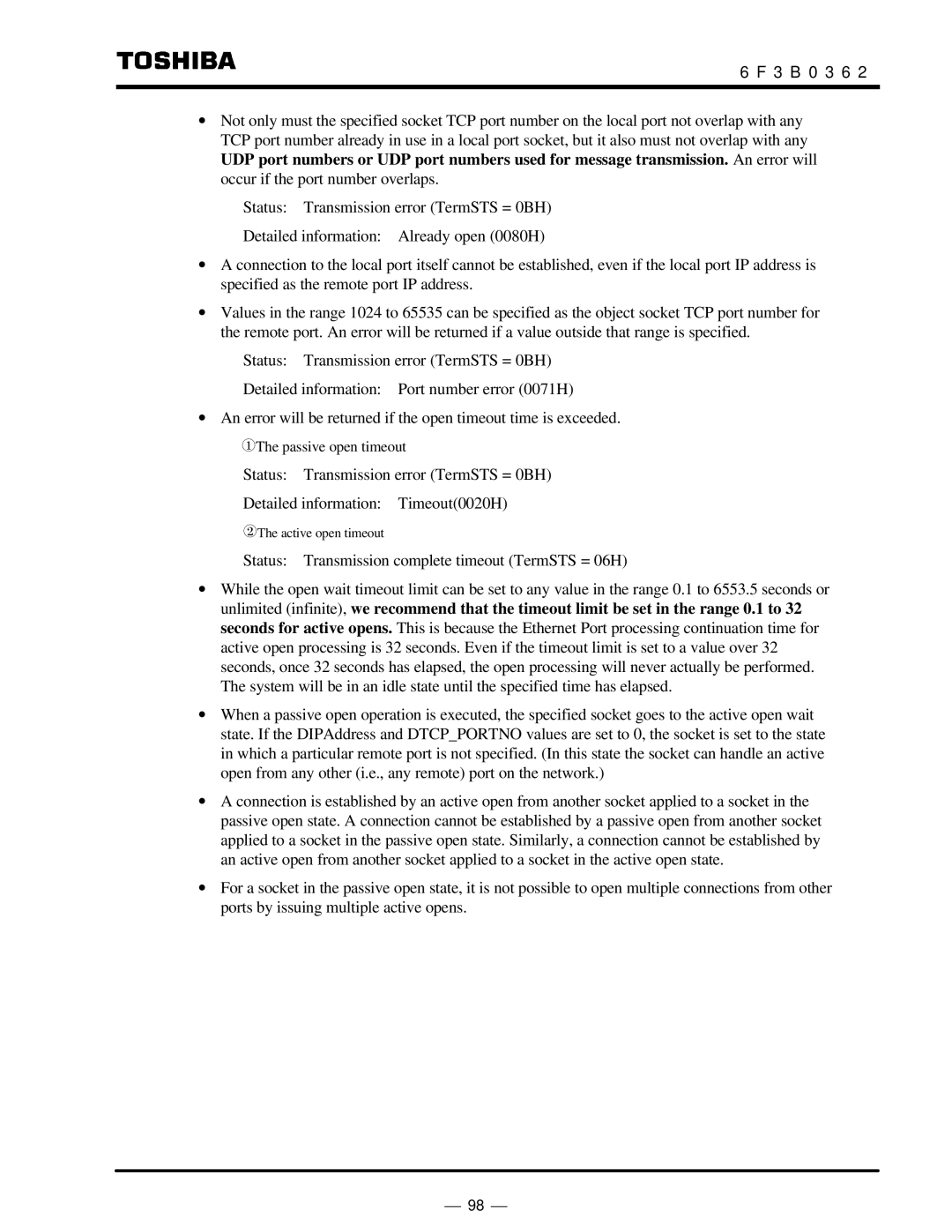
6 F 3 B 0 3 6 2
∙Not only must the specified socket TCP port number on the local port not overlap with any TCP port number already in use in a local port socket, but it also must not overlap with any
UDP port numbers or UDP port numbers used for message transmission. An error will occur if the port number overlaps.
Status: Transmission error (TermSTS = 0BH)
Detailed information: Already open (0080H)
∙A connection to the local port itself cannot be established, even if the local port IP address is specified as the remote port IP address.
∙Values in the range 1024 to 65535 can be specified as the object socket TCP port number for the remote port. An error will be returned if a value outside that range is specified.
Status: Transmission error (TermSTS = 0BH)
Detailed information: Port number error (0071H)
∙An error will be returned if the open timeout time is exceeded.
¬The passive open timeout
Status: Transmission error (TermSTS = 0BH)
Detailed information: Timeout(0020H)
Status: Transmission complete timeout (TermSTS = 06H)
∙While the open wait timeout limit can be set to any value in the range 0.1 to 6553.5 seconds or unlimited (infinite), we recommend that the timeout limit be set in the range 0.1 to 32 seconds for active opens. This is because the Ethernet Port processing continuation time for active open processing is 32 seconds. Even if the timeout limit is set to a value over 32 seconds, once 32 seconds has elapsed, the open processing will never actually be performed. The system will be in an idle state until the specified time has elapsed.
∙When a passive open operation is executed, the specified socket goes to the active open wait state. If the DIPAddress and DTCP_PORTNO values are set to 0, the socket is set to the state in which a particular remote port is not specified. (In this state the socket can handle an active open from any other (i.e., any remote) port on the network.)
∙A connection is established by an active open from another socket applied to a socket in the passive open state. A connection cannot be established by a passive open from another socket applied to a socket in the passive open state. Similarly, a connection cannot be established by an active open from another socket applied to a socket in the active open state.
∙For a socket in the passive open state, it is not possible to open multiple connections from other ports by issuing multiple active opens.
⎯ 98 ⎯
